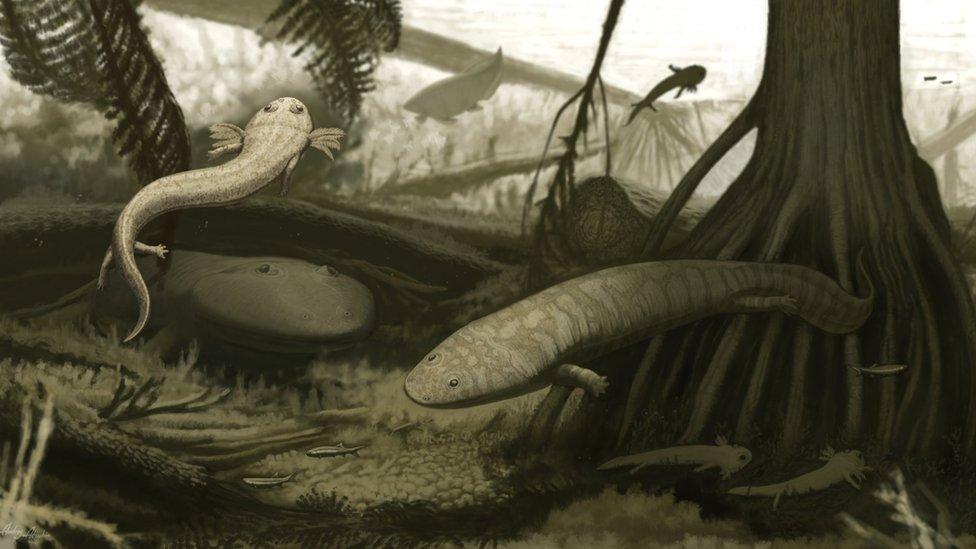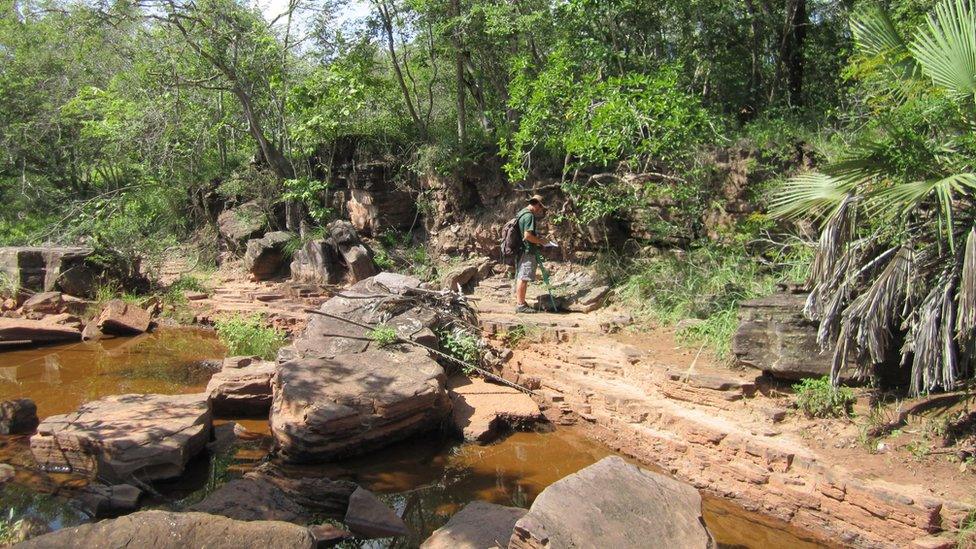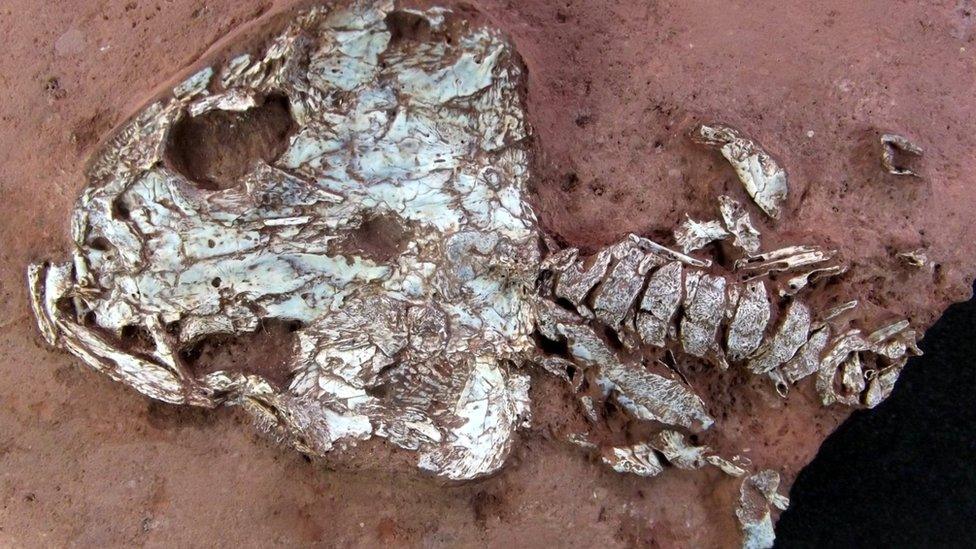'Fanged eel' among Brazil fossil finds
- Published

This illustration shows the two new amphibian species, T. anneae (left) and P. nazariensis (right), with one of the larger "rhinesuchidae" lurking in the background
An international team of scientists has unearthed a significant haul of reptile and amphibian fossils in Brazil, dating from 278 million years ago when all the continents were joined together.
The fossils include two new species of "dvinosaur" - extinct cousins of modern salamanders - which were about 40cm long, one of them with fangs and gills.
South America's oldest ever terrestrial reptile skeleton was also in the haul.
The finds are reported in the journal Nature Communications, external.
The ancient reptile is a lizard-like creature called Captorhinus aguti, previously only found in North America.
These discoveries, all from north-eastern Brazil, are noteworthy because little is known about the plants and animals that occupied this region during the Permian period; the southern tropics of the "supercontinent" Pangaea are not well-populated by fossil finds.

The team made the discoveries in the Parnaiba Basin of north-eastern Brazil
One of the study's co-authors, Dr Martha Richter from the Natural History Museum in London, said: "This discovery is remarkable as most of what we understand about the evolution and adaptation of amphibians through time is based on animals located in Europe and North America.
"Now that we know that their distant relatives inhabited a vast lake system in the tropical region of the supercontinent Pangaea... we can find out more about their abundance, palaeobiology, and how wide their distribution away from the equator was."
Of the newly described amphibians, the researchers say the fanged-and-gilled Timona anneae looked like a cross between a Mexican salamander and an eel. Procuhy nazariensis, meanwhile, was probably closely related but fewer bones have been found to detail its anatomy.
Both species appear to have spent their entire lives in the water.
The team also found skull remains of another, larger amphibian, belonging to the "rhinesuchidae" family mostly known from younger fossils in South Africa. This critter was about as big as a medium-sized dog.

The skull of Timonya anneae is just a few centimetres across
"Fossils from classic areas in North America and Europe have been studied for over a century, but there are long-standing questions about how different animal groups dispersed to other areas," said another of the paper's authors, Dr Ken Angielczyk from the Field Museum in Chicago, US.
"Exploration in understudied areas, such as north-eastern Brazil, gives us a snapshot of life elsewhere that we can use for comparisons. In turn, we can see which animals were dispersing into new areas, particularly as an ice age was ending in the southern continents and environmental conditions were becoming more favourable for reptiles and amphibians."
As well as the US and the UK, the research team included scientists from Brazil, Argentina, South Africa and Germany.